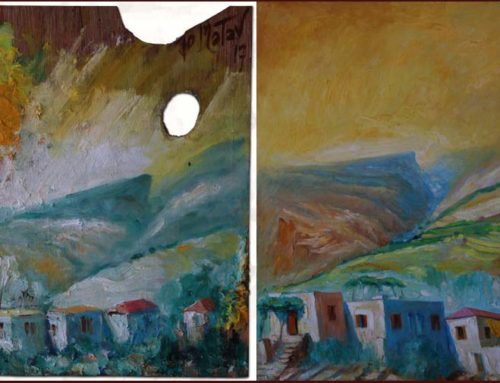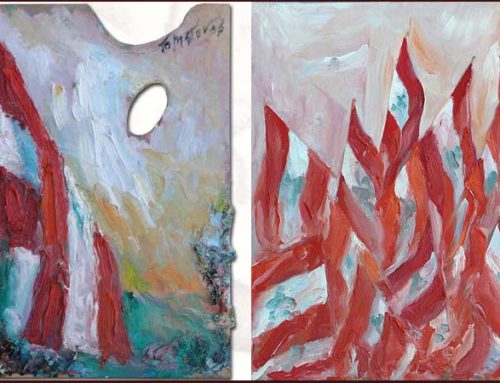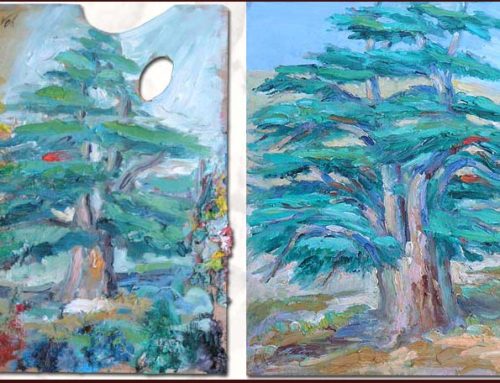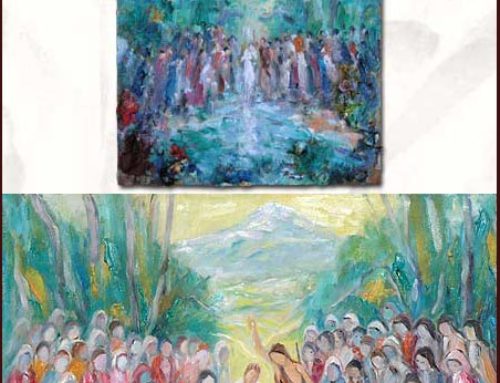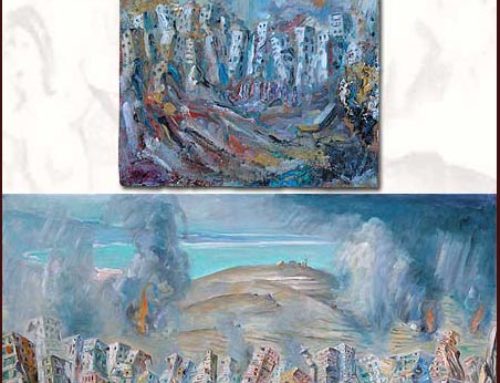Herald Tribune & The Daily Star – An article from October 3 – 2001 (English)
Lebanese artist takes inspiration from all things spiritual . ‘I’m influenced by God, the cosmos and beautiful women’
Joseph Matar has been waking up at three in the morning lately, and rushing down to his studio to paint. He can’t help it.
“Every moment there is something new,” he insists, speaking from his house in the hills overlooking Jbeil. He waves his arms in the air impatiently, switching from Arabic to French to Spanish to English, trying to pin down the exact origins of this creative energy. His work is transforming “all the time, all the time,” he says. “There’s just no time for stopping.”
Painter, poet and self-proclaimed student of the cosmos, Joseph Matar has been described often by critics as a creator of “sacred art.” Yet “sacred” must not be seen as purely Christian or purely religious, for in his canvases a space emerges where the human and sacred combine, where the yellow stones of Lebanese houses press up against pastoral figures, where women harvesting wheat do not seem divorced from city scenes of the harbor in Jounieh. Matar insists that he paints sacred art because “every creature is sacred art.”
And while “sacred” recalls all the figures in his work, it also refers to a light that emanates from his canvases, a light Matar insists comes not from the paint itself but from the painter.
“The artist is his own creator,” he says. “I paint like I pray.”
Born in Ghadir, Lebanon, Matar describes himself as a “universal painter” who has studied not only with Lebanese masters, but in Madrid, Paris, and Rome.
And though local landscapes pervade in his work, it would be unfair to refer to Matar as strictly a Lebanese painter. He insists that every country he has lived in has its own character, and that “like sugar,” he absorbs everything from each place he lives. “Everywhere I go, I try to get into the soul of the people,” he says. “Each country has it’s own character the French soul, the Spanish soul, the Brazilian soul.”
Indeed Matar, who can barely keep still while he speaks, lives and paints in Lebanon with such energy as to leave no doubt that he approaches foreign countries with equal hunger.
Perhaps this explains the wide appeal of his work; it has been displayed in more than 60 personal exhibitions across the world, and his paintings appear in private collections everywhere from Brazil to Iraq to Ghana.
And while his early influences were such masters as Michelangelo and Goya, he now claims influences far broader in scope. “I’m influenced by God, the cosmos, the spiritual, beautiful women,” he says. “I am influenced by anything beautiful.”
While Matar’s work clearly reflects an influence on light reminiscent of Impressionism he mentions Degas as an influence he clearly seeks to move beyond form in order to express a level of emotion in his painting.
Like Chagall before him, Matar considers himself to be both a painter and a poet, and suggests that the emotion of poetry and the substance of painting cannot be separated. “You need feeling to write a poem or to paint,” he says. “Like dance has a close relationship to music, poetry is sometimes like a picture when you read the poem of a poet you will see the picture in front of you.”
Likewise, the emotion of poetry should be present in every painted work. Yet Matar stresses that emotion is not enough to create either poetry or painting, that in the end an artist requires both emotion and technique. “Rembrandt used to paint with one color but you can see how beautiful it is. If you have 52 colors and use them all, you will not necessarily have a good painting.”
While some of the figures in his earlier work leaned toward a certain naivete, Matar’s recent paintings have evolved to contain a quiet strength and clarity without sacrificing the almost shocking light that makes them both highly emotional, and links them so concretely to the landscapes of the Mediterranean.
And Matar insists that his work will continue to evolve he has an exhibition at the Municipality of Jounieh this month, and the hundreds of paintings scattered in his studio, the sketches with poems scribbled beside them, even the artist palettes transformed into paintings all attest to a creative energy that shows no signs of fading.
He explains that not just his own painting, but art itself, is a process of continuous evolution.
“History began with art people painted in caves and carved into ivory we know history through the artistic works that people left behind. In modern days, we cannot separate art from civilization.” Asked why he continues to paint, he throws his hands in the air. “That is like asking why I am alive.” For more on Joseph Matar, and other Lebanese artists, see www.lebanonart.com
Stephanie Saldana – Daily Star staff
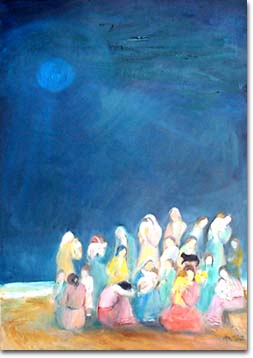
The Blue Moon, one of Matar’s pieces: “I paint like I pray”



